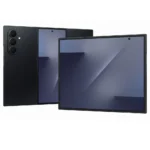Samsung Electronics elevated its foldable phone sales target to 7 million units for next year, banking on renewed competitiveness in flip-style devices after clamshell models lost momentum to cheaper rivals.
The projection represents a 35% increase from 2024’s 5.21 million units, according to industry watchers cited by Korean media. Samsung’s mobile division needs aggressive growth in premium-priced foldables—ranging from ₩1.5 million to ₩2.9 million ($1,030 to $1,990)—to reach its ambitious ₩130 trillion ($89.3 billion) revenue target for 2025.
The challenge centers on reversing Samsung’s flip-phone decline. Sales of Samsung’s clamshell models dropped from 3.66 million units in 2023 to 2.89 million in 2024, with further deterioration expected this year. Market research firm BayStreet Research found Motorola captured 78% of the US flip-foldable market from January through July, relegating Samsung to 22%—a stark reversal from Samsung’s previous dominance exceeding 50% share.
Book-style foldables showed opposite momentum. Samsung’s Fold series climbed from 2.09 million units in 2023 to 2.32 million in 2024, with this year’s thinner Galaxy Z Fold7 driving additional gains. The company attributed success to meaningful hardware improvements: the Fold7 shed 10% of its weight and reduced thickness by 25% when unfolded.
Industry analysts fault Samsung’s flip models for insufficient innovation. The Flip7 trimmed just 1 gram in weight and reduced thickness by merely 5.8%—incremental changes that failed to excite upgraders while Motorola’s Razr undercut pricing by 37%.
Samsung faces pressure to deploy more aggressive design refinements and potentially introduce mid-tier pricing variants to recapture share. Analysts suggest the company may reserve substantial engineering resources for next year’s flip refresh while sacrificing other product lines, viewing flip-phone recovery as critical to hitting broader business targets.





